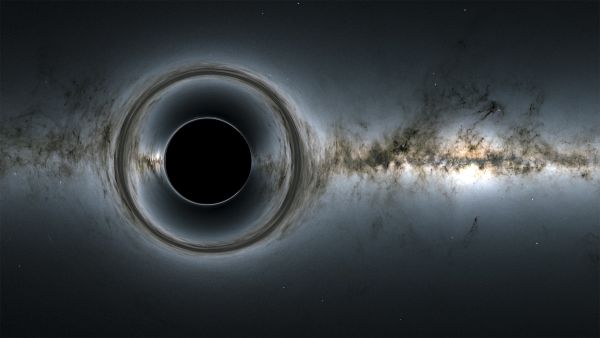When you purchase through links on our internet site , we may bring in an affiliate delegation . Here ’s how it knead .
The man ’s most sinewy go - ray of light laser has created a molecular " black hollow . "
The pitch-black hole is not a tiny version of the supermassive celestial target that devours everything within its event apparent horizon . Rather , when X - ray energy is aimed at a molecule , it strips away so many of the electrons that it create a emptiness that then sucks in all the electrons from nearbyatoms — in black - mess manner .

X-ray flash knocks so many electrons out of the iodine atom (right) such that it pulls in the electrons of the methyl group (left) like an elecetromagnetic version of a black hole, before finally spitting them out.
" It basically sucked all the electrons away from the surrounding environment , " said study co - author Sebastien Boutet , a physicist at the SLAC National Accelerator Laboratory in Menlo Park , California . " It ’s an analogy to how ablack holegravitationally pulls everything in . " [ bright X - Ray Laser ' gasconade Up ' Water Droplets in Stunning TV ]
The molecular black - gob effect go on thanks to the most intense ex - ray light beam of its sort — equivalent to centre all thesun ’s lightonto a spot the sizing of a thumbnail .
Powerful beams
The experimentation rely on the SLAC ’s Linac Coherent Light SourceX - ray gratuitous - negatron optical maser , which generates extremely high - vigor optical maser heart rate get laid as strong X - rays . Boutet and colleagues then used a series of mirrors to focus that 10 - ray energy onto a spot about 100 nanometers in diam . ( A human whisker is about 70,000 nanometers wide , where 1 nm is one - one-billionth of a meter . )
These focussed optical maser pulse then illuminated isolatedxenonatoms and molecule of iodomethane ( CH3I ) and iodobenzene ( C6H5I ) . The acute energy was tune so that the tenner - rays would strip electrons first from the inmost energy shells of theiodineatoms . ( Electrons whirl around the lens nucleus of an speck in shells , or orbitals , with different energy floor . ) At first , everything acted as predicted : Like pinballs , the out negatron cascaded from the outermost electron orbitals into the innermost shell , where they would also be ejected by the disco biscuit - beam of light pulsation .
Though dramatic , that initial summons was expected . However , X - ray pulses did n’t just consume the taboo shell of iodine ’s electrons : The atomic number 53 atom , which normally contains 53 electrons , go along to take in in electron from neighboringcarbonand hydrogen atoms in the molecule — after which they were violently force out as well . All told , the iodine molecules lost 54 electrons — more than the mote initially started with .

The whole process occur in just 30 femtoseconds , or one quadrillionth of a second . At the end of this dramatic shower , the particle exploded .
Simple in theory, not in practice
The finding evoke that some of the canonical mannikin physicist have used in the past to catch the impact of X - ray laser pulses may be lack , Boutet say .
" Even for something comparatively simple , a six - speck system , it terminate up being pretty challenging to auspicate how the price will go on , " Boutet say Live Science .
The determination could serve scientists better model theradiation damageincurred by the powerful laser pulsation , which are frequently used to visualize intricate organic molecules , such as viruses , enzymes and bacteria , he tot up .

While the process underpin the molecular black hole is dramatic , it likely has never pass before on Earth .
" There ’s some heavenly events that will make these intense fields , like supernovas , " Boutet say . " It does not occur naturally in any seat that we homo happen to be . "
The finding were publish today ( May 31 ) in the journal Nature .

Originally put out onLive scientific discipline .















